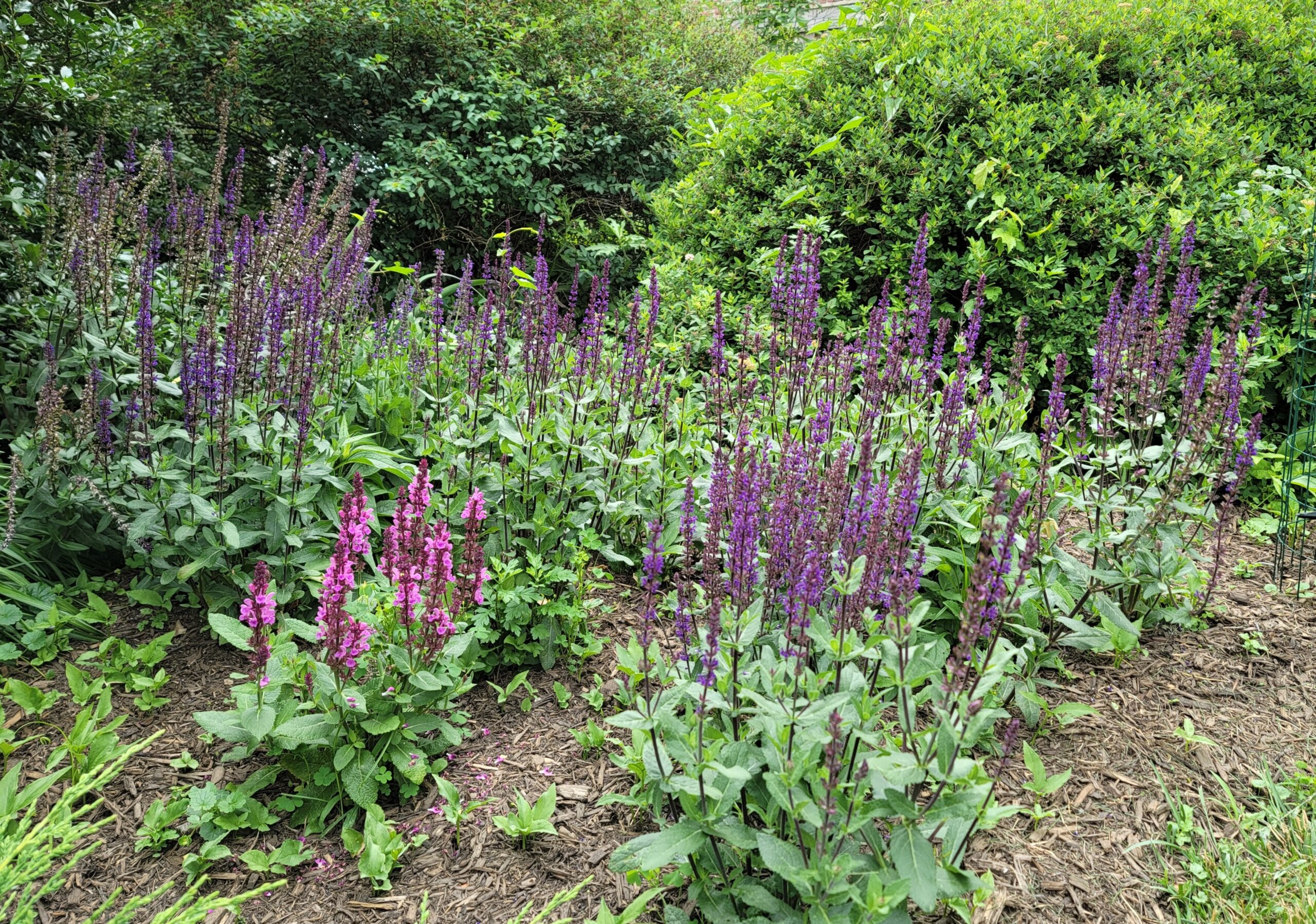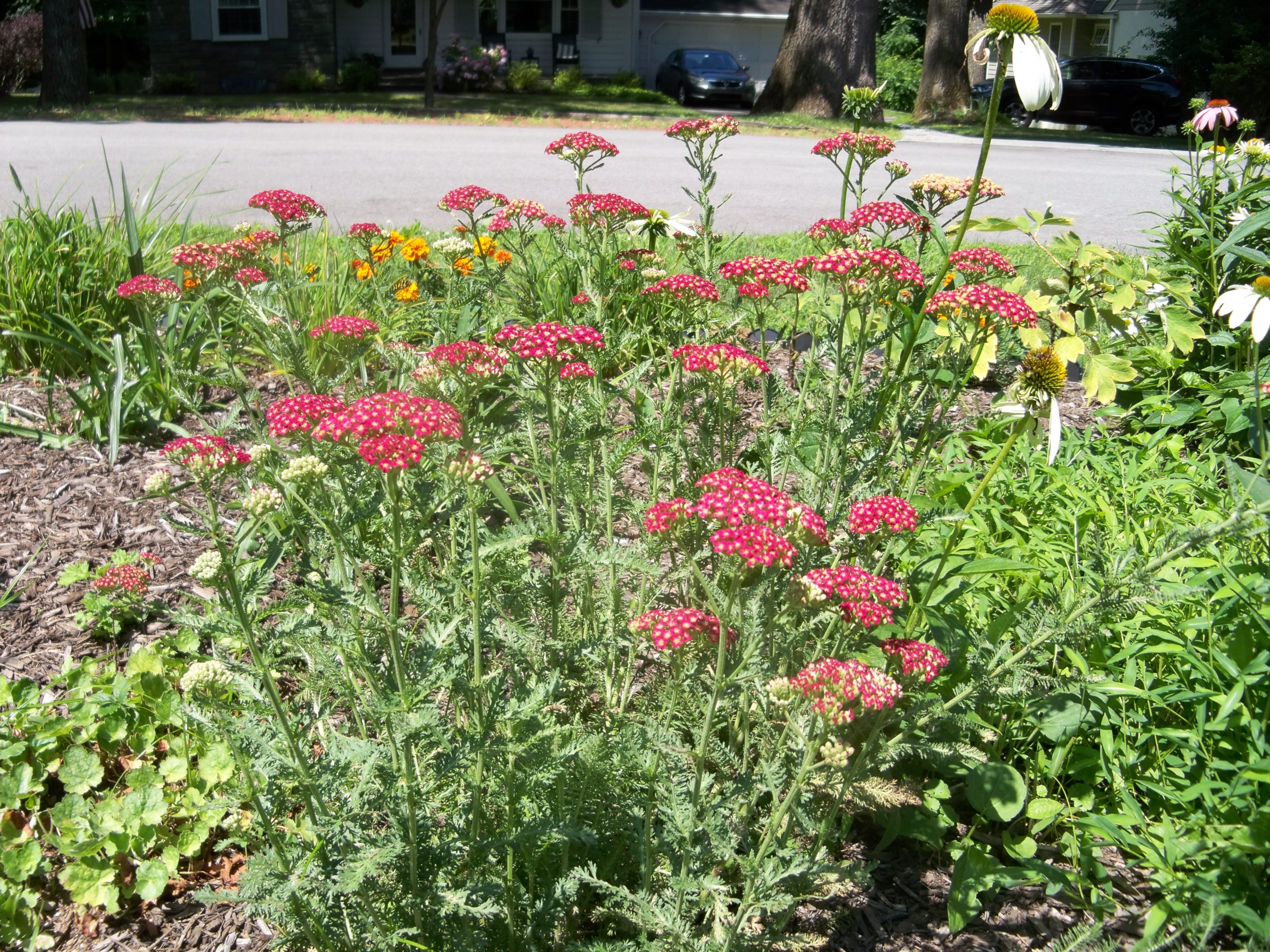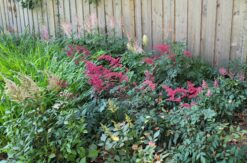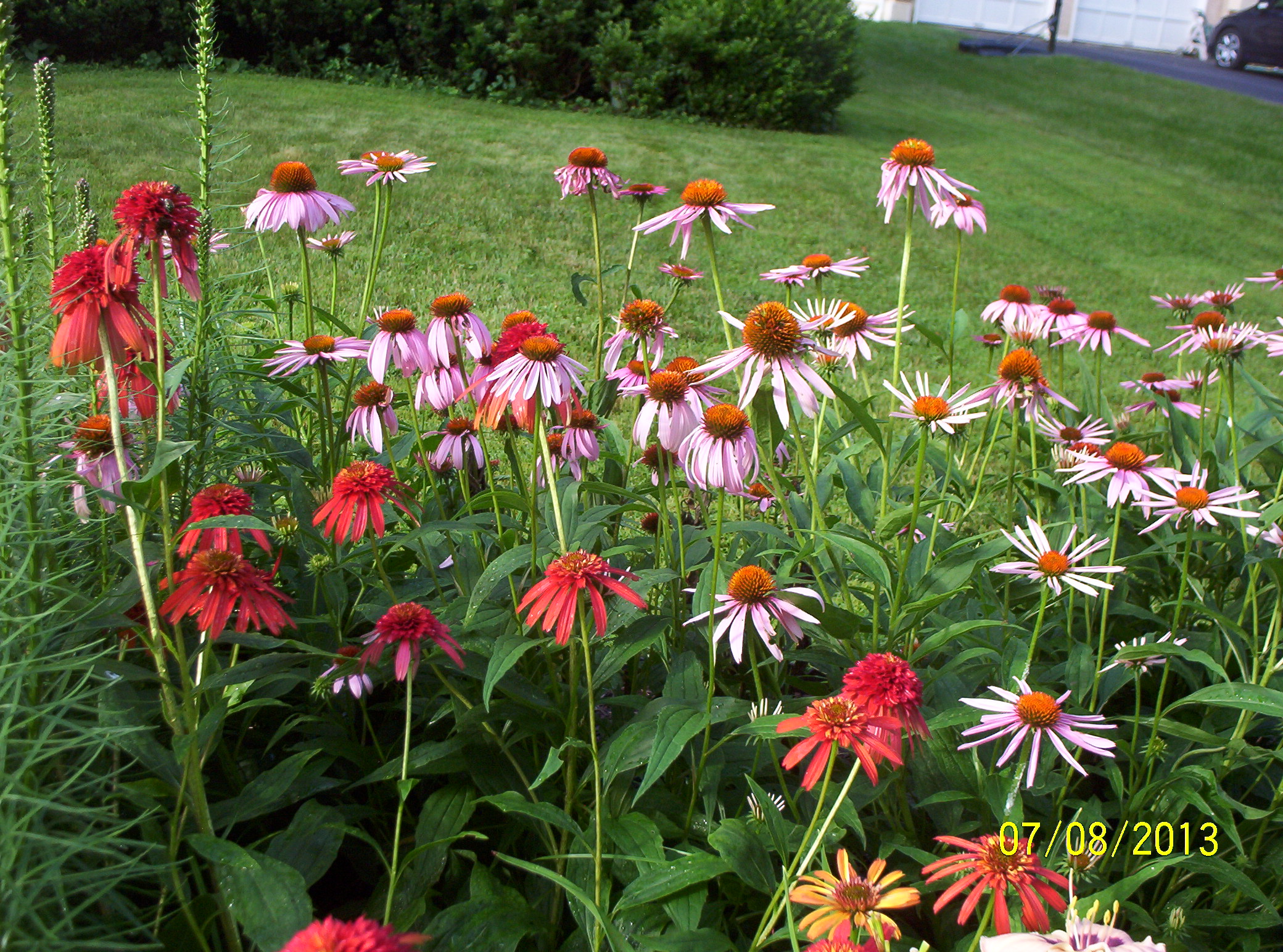This post provides some tips of growing and caring for Salvia nemorosa. Salvias belong to the mint family and are native to Europe and west-central Asia. There are many species of salvia, some are annual, and others are perennial. Salvia nemorosa is the most popular perennial in the family, commonly known as woodland sage or meadow sage. These perennials are hardy to zone 4, and prefer moist, well-drained soil at a sunny location. They are 1.5 – 3 ft tall and 1.5 -2 ft wide. Blooming time ranges from June to September. Most of them have violet-blue flowers, but a few have pink flowers.
Saliva nemorosa are magnet for butterflies and bees. Recommended cultivars are: Caradonna, May Night, and Pink Friesland. They are available from jungseed.com.
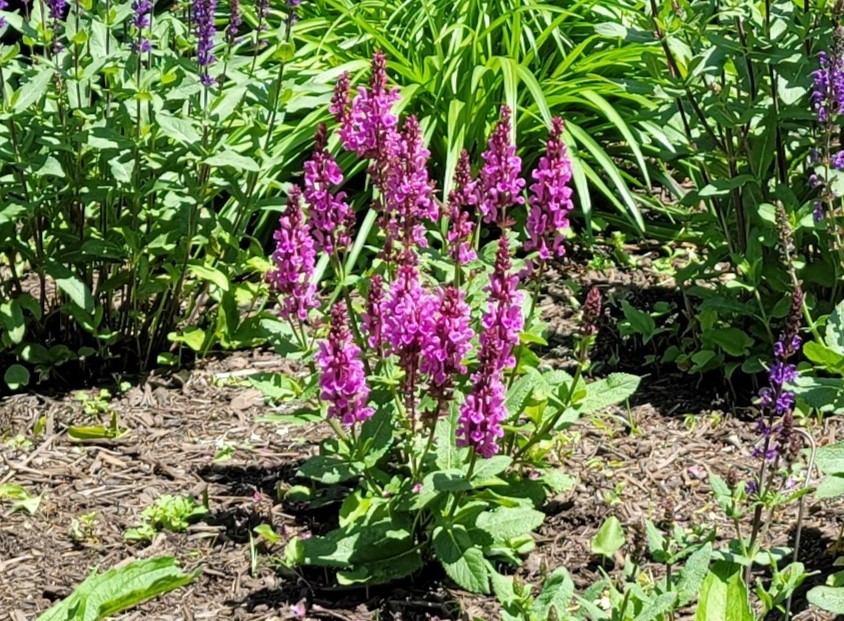
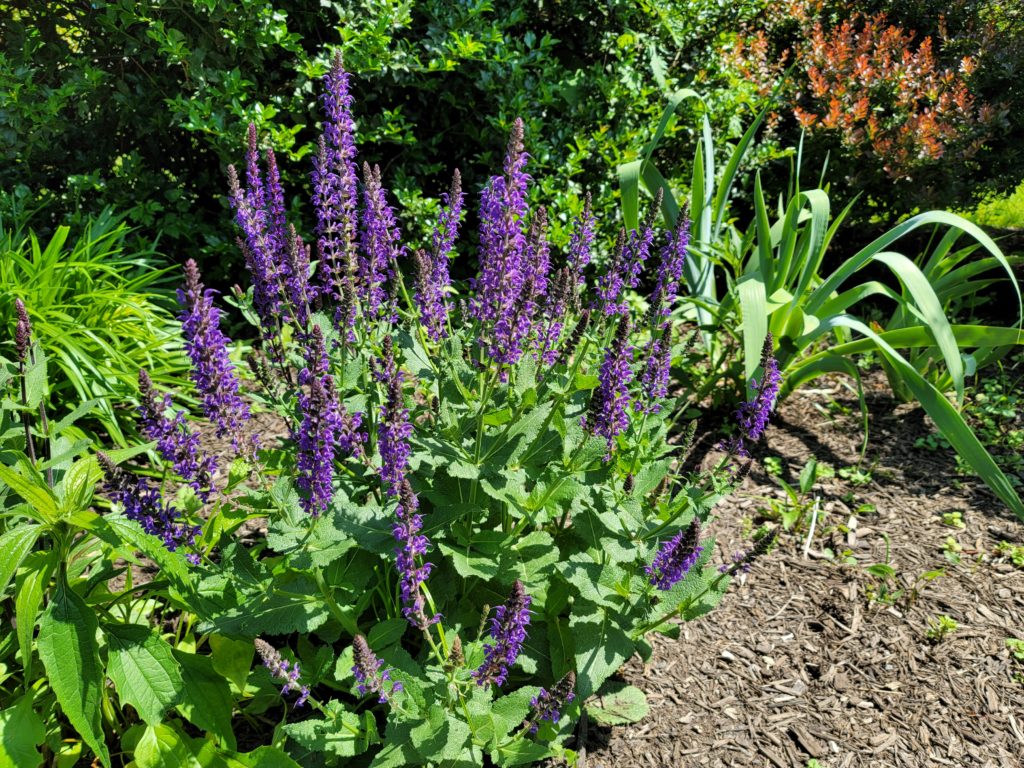
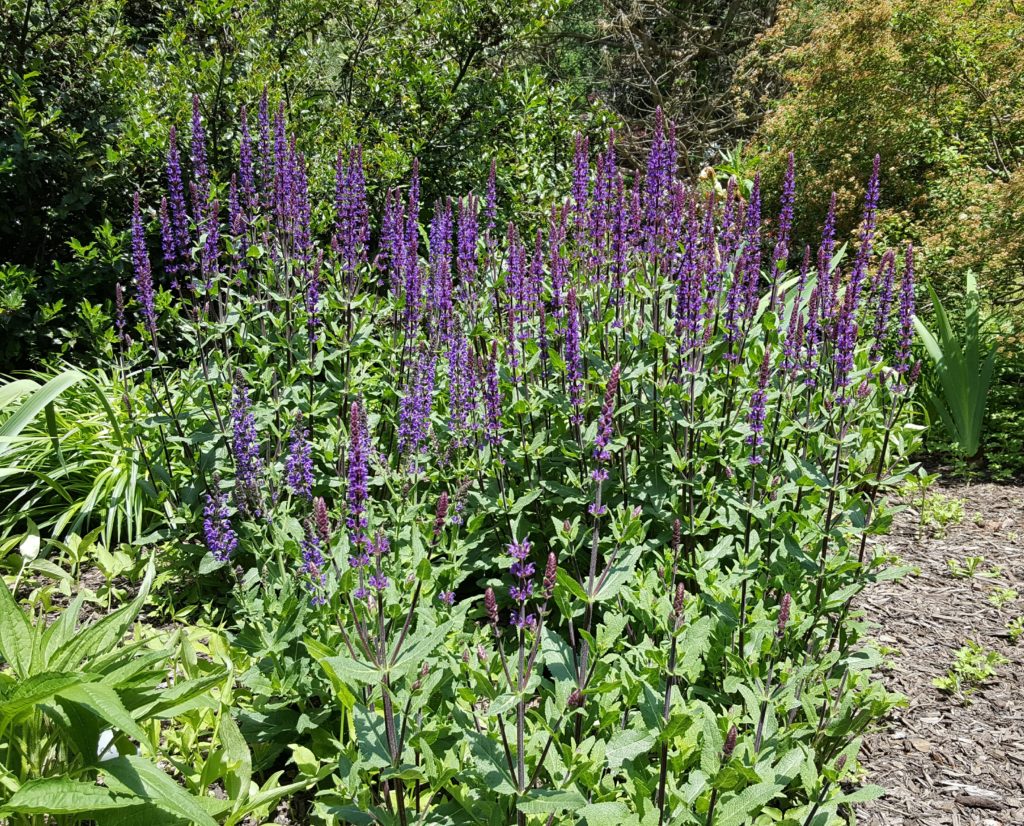
Caring for Salvia nemorosa
Salvia nemorosa is easy to grow. They are truly drought-tolerant and deer resistant plants. Maintenance is minimal. Just shear off the spent flower spikes to extend the blooming period. In the fall, the plants tend to flop and bend outward. When that happens, cut the old stems back to allow the new basal growth to receive the sunlight.
They can grow for years without intervention. However, if the clump becomes too large, divide them in early spring shortly after new leaves appear. Division of salvia is similar to that of daylilies as described in this post. The clump may be loose, so do not worry if they break into pieces during division. Just plant a few pieces in one hole. Their roots may be woody, and require cutting with a sharp knife.
